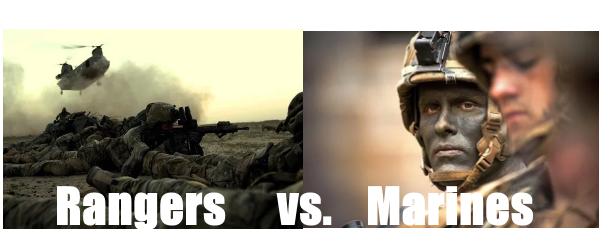When you think about the Army Rangers vs Marines, you already know you are contemplating some of the most highly skilled members of the armed forces.
However, there are some differences between the two, despite their high regard.
Both the Marines and the Rangers are elite parts of the military but have very different mission sets.
In fact, to have highly capable and efficient armed forces, it is critical to have organizations that perform specific duties and missions.
To begin, here is a quick rundown of the basic similarities and differences between the Army Rangers vs Marines.
Related Article – Navy SEALs Vs. Army Rangers: An In-Depth Comparison
| Army Rangers | Marines | |
|---|---|---|
| Summary | The Army Rangers are a light infantry unit that takes on high-priority missions. | The Marines are deployed to fight on land, sea, and air during times of crisis. |
| Founded | 1943 | 1775 |
| Motto | Rangers Lead the Way | Semper Fidelis (Always Faithful) |
| Logo/Insignia | 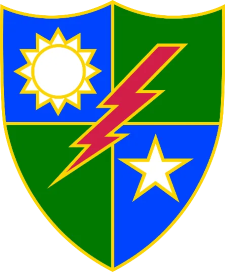 | 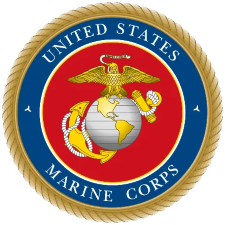 |
| Commanded By | US Army Special Operations Command | U.S. Marine Corps Forces Command |
| Total Size | Close to 3,600 | 177,000 active duty personnel 32,400 Marine Reservists |
| Primary Mission | The Army Rangers are an elite light infantry force specializing in missions within enemy lines. | The Marine’s mission includes the seizure and defense of naval bases and any other land operations that support the Navy. Develop equipment for amphibious landing in coordination with other military branches. Perform duties directed by the President or the Department of Defense. |
| Requirements | US Citizen Physical Ability Airborne Training No legal problems Security Clearance Pre-Qualify for RASP training | US Citizen Meet moral, mental, and physical expectations Age 17-28 High School Diploma or equivalent Physical Exam at MEPS Pass ASVAB test |
| Training and Selection | Basic Combat Training and Advanced Individual Training Airborne Training Pre-Qualify for Ranger Assessment and Selection (RASP) Complete RASP training phases | Boot Camp School of Infantry MOS Training |
| Are Women Allowed? | yes | yes |
Table of Contents
What are Army Rangers?
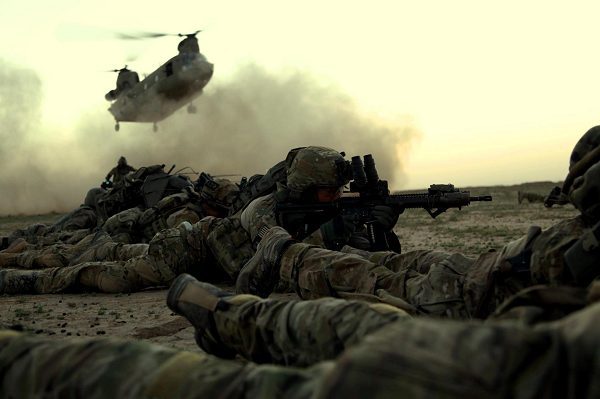
The Army Rangers are a part of the Special Operations Command and are truly an elite military fighting force/unit within the Army.
Rangers possess high amounts of self-discipline and show good judgment.
It is important to note a soldier’s attachment to the 75th Ranger Regiment is different from Ranger School.
Ranger School is a leadership course open to anyone in the military.
Rangers earn the right to wear a tan beret after completing RASP training.
RASP training is a challenging course designed to discover the most competent of soldiers the Army has to offer.
The program is broken into phases, and if soldiers are unable to successfully complete a section, they are recycled to try again.
Army Rangers are highly specialized in light infantry.
Also, the Ranger’s missions include direct raids, search and recovery, reconnaissance, and seizing airfields, to name a few.
Related Article – Green Berets vs. Army Rangers
What are Marines?
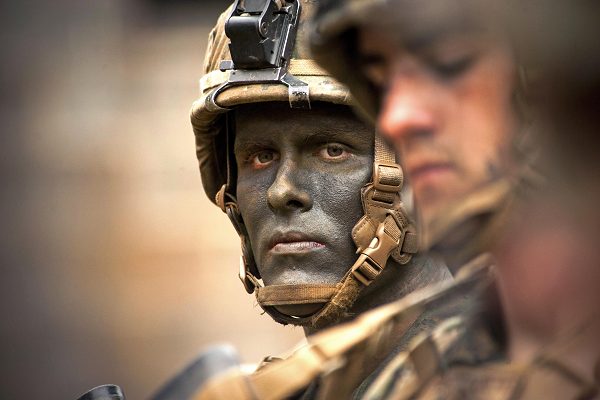
The Marines are sometimes referred to as the naval infantry.
The Marines specialize in supporting Naval and Army operations at sea, in the air, and even on land.
Also, the Marines have their own missions.
Founded in 1775, the Marines became a component of the Navy in 1834, and the two branches are known to work closely together.
The Marines are critical in the armed forces because of their ability to handle warfare with conventional forces as well as irregular and hybrid forces.
The Marines can deploy quickly to any part of the world and have units fully integrated with ground combat, aviation, and logistical support.
Related Article – How To Join The Marine Corps
What do Army Rangers do?
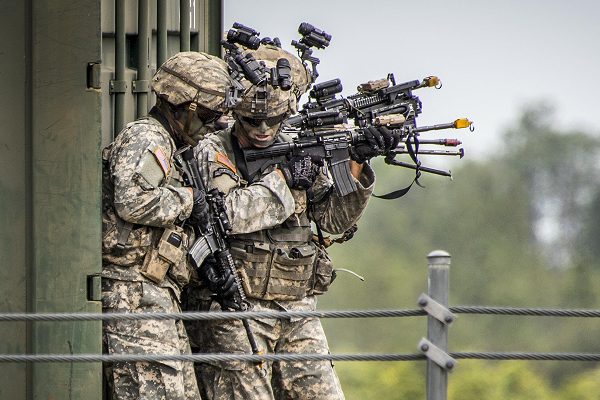
The Rangers specialize in special operations and forcible entry operations.
Rangers are the Army’s light infantry force that works inside enemy lines.
Three parts make up the Ranger mission.
First are the special operations raids.
Second, forcible entry operations are an essential part of the Rangers.
Lastly, the Rangers are responsible for special surveillance.
The Rangers are organized into small units, which makes them very mobile.
Furthermore, the Rangers are trained for flexibility and adaptability, making them lethal and valuable.
Related Article – How To Become An Army Ranger
What do Marines do?
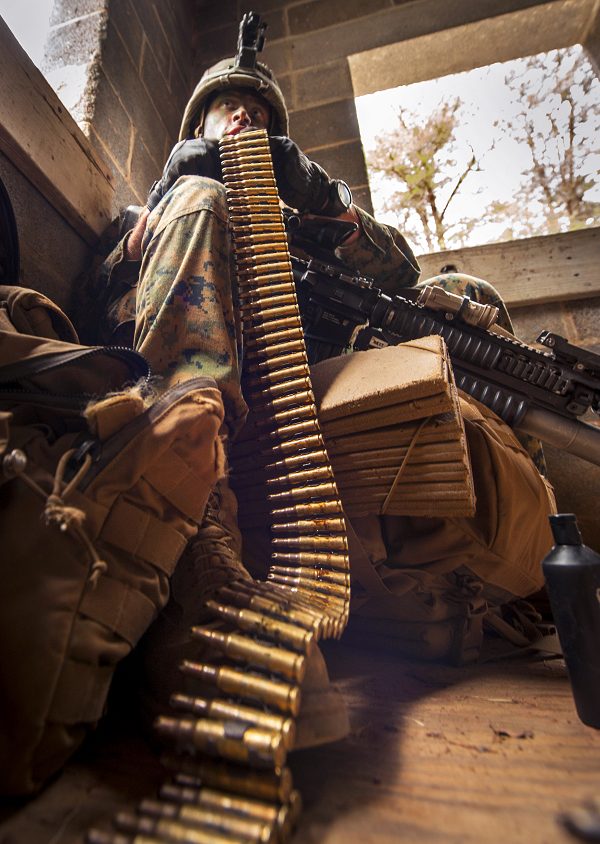
The Marines are an elite fighting force.
There are many duties in the Marine Corps, including pilots, intelligence, maintenance, and infantry, to name just a few.
Marines respond to international crises, and they are a force always ready for action.
The Marines play a significant role as the first forces on the ground during military conflicts.
Marines are trained to be adaptable in any situation and able to find solutions for all obstacles.
This kind of determination is what sets the Marines apart.
Since their first battle at Fort Nassau in 1776, the Marines continue to perfect warfare tactics and develop innovations that save lives.
Also, the Marines are often called on for disaster and humanitarian missions.
For Instance, the Department of Defense called on the Marines to assist with saving lives in the Himalayan Mountains after an earthquake.
Also, the Marines worked with FEMA after Hurricane Katrina in Louisiana in 2005.
Whether it is warfare or humanitarian efforts, the Marines focus on pride, honor, and integrity in all that they do.
Related Article – Army vs. Marines: 5 Big Differences Between Both
Army Ranger Selection Process and Training
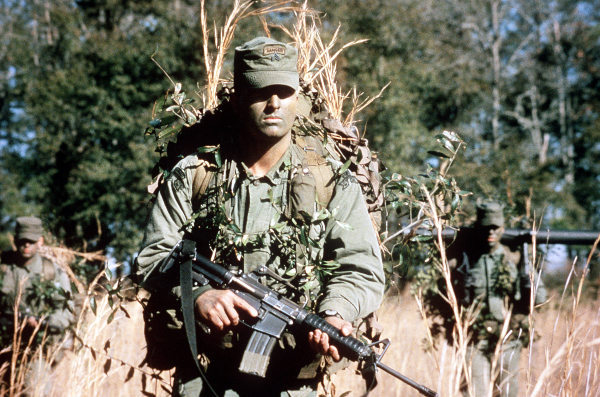
Army Rangers go through much more of an in-depth and grueling training process than that of your average Marine, such as SERE, Pathfinder, Air Assault, Airborne, and so forth.
In order to join this elite fighting force, you must volunteer for the Rangers and complete airborne training.
Also, your occupation in the Army must be one that is part of the 75th Ranger Regiment.
If your MOS is outside this scope, you may consider reclassification to a MOS that does.
Furthermore, you must have the necessary security clearance.
Once you qualify, you are eligible for consideration.
You need to make it through Ranger Assessment and Selection (RASP), which puts candidates in intense situations to test their physical and mental capabilities.
The RASP course is three phases long.
The first phase involves a lot of physical fitness.
You will do the usual exercises such as push-ups and pull-ups, as well as sit-ups.
Also, there is a two-mile run as well as ruck marches over varying distances.
The rucks are weighted, of course.
The second phase is where you learn the overall skills of a Ranger.
These skills include marksmanship in a variety of terrain and circumstances.
Also, you learn the skills necessary for entering buildings in an urban environment, and how to use explosives.
Once completing RASP, soldiers are Rangers and wear a tan beret.
Many Rangers continue to Ranger School, where they earn the right to become leaders, but Ranger School is different than RASP.
Related Article – Army Combat Fitness Test (ACFT) Standards
Marine Selection Process and Training
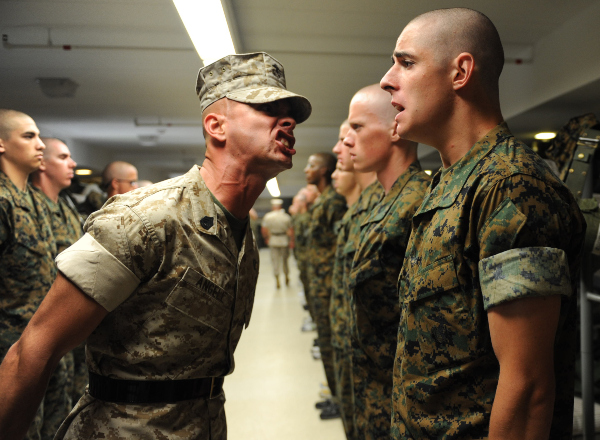
Becoming a member of the Marines starts with a visit to your recruiter.
You must be at least 17 years old.
Also, you must be under 28 before you begin training.
Also, you must be a legal resident and pass a physical exam.
Furthermore, you must have a high school diploma or equivalent (IE GED) and graduate from recruit training.
You will visit the Military Entrance Processing Station (MEPS). There you will have a physical test to pass.
Once you are in the clear, you will attend boot camp.
After boot camp, you will attend the School of Infantry, where you will train as either infantry or non-infantry.
The School of Infantry’s training mission is to ensure every Marine is a Rifleman.
Those who are going into infantry receive their training at the Infantry Training Battalion (ITB).
The Infantry Training Battalion is a 59-day course where Marines learn how to fight and win.
Marines learn marksmanship, grenades, explosives, how to operate in urban terrain, and much more.
If you are non-infantry, you will attend a 29-day course called Marine Combat Training (MCT).
This training ensures Marines know the common skills necessary for combat.
Marines learn marksmanship, explosive devices, defense in combat, military intelligence, and much more.
After this round of training, you move on toward training in your Military Occupational Specialty (MOS).
Your Occupational Specialty is your job in the Marines, and once your training is complete, you will follow your orders to your duty station to carry out your work.
Related Article – Marine Corps Bonus List
Conclusion
From a practical standpoint, the Marines cannot be compared to Army Rangers in any way, shape, or form.
The only other US fighting forces that are comparable, or even more elite than Army Rangers, are Army Special Forces (aka Green Berets), Army Delta Force, Navy SEALs, Air Force Combat Controllers (who are almost always assigned to Army Ranger Units), Air Force Pararescue Jumpers, Marine Raiders, and Marine Force Reconnaissance.
Now the Army Infantry, or the Marine Infantry (although both still very tough) are not part of the elite SOCOM units.
Marine Infantry is akin to Army infantry in many ways, as it consists of very similar basic Marine or Soldier training.
As a matter of fact, Army infantry training is now longer than Marine Infantry training, as they have to go through over 5 consecutive months of Basic and Advanced Infantry training.
I’m not saying that average Marines aren’t tough, or that they aren’t worthy of respect, but they are nowhere near Army Rangers or any unit in SOCOM, for that matter.
Resources:
- Ikon Pass Military Discount: Learn How To Save Big - January 31, 2025
- RTIC Military Discount: Find Out How To Save Big on Gear - January 30, 2025
- Traeger Military Discount: Learn How To Save Big on Smokers - January 28, 2025

